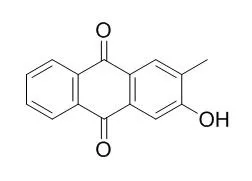Five herbs, Curcuma longa L. (CL), Scutellaria baicalensis Georgi (SBC), Scutellaria barbata D. Don (SBB), Hedyotis diffusa Willd. (HD) and Solanum nigrum L. (SN), are often prescribed in the polyherbal formulas for cancer treatment by traditional Chinese medicine (TCM) practitioners. The purpose of the present study was to identify important anticancer herbs used in TCM and carry out bioactivity-directed fractionation and isolation (BDFI) using six cancer cell lines as well as peripheral blood mononuclear cells (PBMCs), to identify constituents with anticancer activity but devoid of toxic effects against healthy immune cells.
METHODS AND RESULTS:
Of 243 document anticancer TCM treatments, 199 anticancer TCM herbs were ranked by the number of literature reports for each herb. Five herbs were identified from the top 50 ranked herbs by at least two out of three TCM practitioners as frequently used in the TCM treatment of cancer. BDFI using MTS assay was applied to determine the active anticancer extracts, fractions, and finally discrete compounds. Five herbs were selected for study of their anticancer activities. The extracts of Curcuma longa L., Scutellaria barbata D. Don, and Hedyotis diffusa showed antiproliferative activity to various extents, extracts of Scutellaria baicalensis Georgi and Solanum nigrum L. showed little anticancer activity. Seven out of the 21 fractions obtained from Hedyotis diffusa Willd. showed anticancer activity. One new compound, ethyl 13(2) (S)-hydroxy-chlorophyllide a(1), along with 10 known compounds, i.e. 2-methyl-3-methoxyanthraquinone (2), 2-hydroxymethylanthraquinone(3), 2-Hydroxy-3-methylanthraquinone(4), 2-hydroxymethy-1-hydroxyanthraquinone(5), 1-methoxy-2-hydroxyanthraquinone(6), 2-hydroxy-3-methyl-1-methoxyanthraquinone (7), oleanolic acid (8), ursolic acid (9), stigmasterol (10) and docosanoic acid (11), were isolated and identified. Compounds 2-6, 8 and 9 dose-dependently inhibited the cell viability of cancer cells within a concentration range of 1-200µM. Furthermore, compounds 2, 3, 5 and 9 showed significantly stronger inhibition of tested cancer cell lines than on that of PBMCs.
CONCLUSIONS:
This study identified anticancer herbs, extracts, fractions and eventually compounds from the documented anticancer TCM herbs by using BDFI. It also determined the antiproliferative activity in cancer and healthy immune cells of the isolated compounds from Hedyotis diffusa. The results will be useful in the validation of the clinical application of these herbs and the development of novel anticancer therapeutics. |






 Cell. 2018 Jan 11;172(1-2):249-261.e12. doi: 10.1016/j.cell.2017.12.019.IF=36.216(2019)
Cell. 2018 Jan 11;172(1-2):249-261.e12. doi: 10.1016/j.cell.2017.12.019.IF=36.216(2019) Cell Metab. 2020 Mar 3;31(3):534-548.e5. doi: 10.1016/j.cmet.2020.01.002.IF=22.415(2019)
Cell Metab. 2020 Mar 3;31(3):534-548.e5. doi: 10.1016/j.cmet.2020.01.002.IF=22.415(2019) Mol Cell. 2017 Nov 16;68(4):673-685.e6. doi: 10.1016/j.molcel.2017.10.022.IF=14.548(2019)
Mol Cell. 2017 Nov 16;68(4):673-685.e6. doi: 10.1016/j.molcel.2017.10.022.IF=14.548(2019)